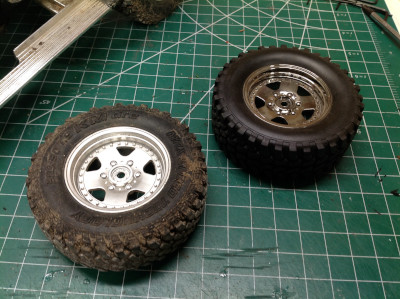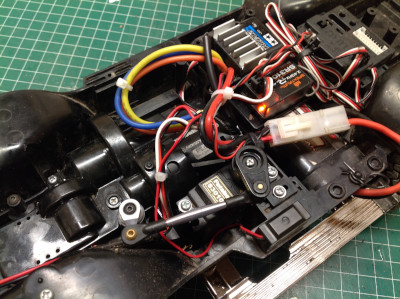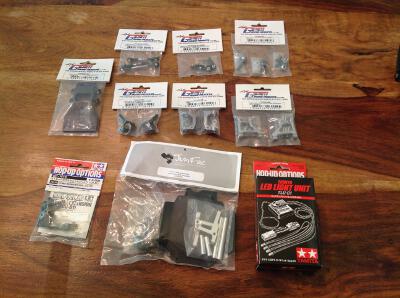I used a Tamiya 1/10 scale 4x4 driver figure, but I
had to heavily mutilate him to make him fit. Only the top of the
torso and arms are present. Under that is a flat black metal sheet
to hide the internal wiring and support the driver. I also carved
some
very simple seat backs from balsa. Not sure if you can
even quite see them through the window. After 4 upgrade phases, I
think this thing might finally be done. Of course it could always use some scale accessories in that roof rack ....
Phase 5:
After all that work to improve the appearance, I eventually decided I
better attack the performance as well. The two weak spots of the
CC-01 chassis are the rock hard tires and the way too high
gearing. For a long time there weren't really any appropriately
sized tires to use as a replacement, but MST came to the rescue with the
90mm tires shown which are much softer and stickier than the stock
tires. To solve the low speed problem, and since I was already
using the TBLE-02s speed controller which supports sensored brushless
motors, I got a 25.5T Hobbywing motor.


The picture on the left compares the new and old tires. The dirty
tire on the left is actually the new tire because I took this picture
after I'd already tried it out. You can see that the tire and
tread pattern are nearly the same. What you can't see is how much
softer the new tire is. The new tires are very slightly larger in
diameter which makes for less clearance in the wheel well. There
can be minor rubbing under extreme articulation conditions, but the
improved performance makes this more than worth it. On the right
you can just barely see the new brushless motor installed in the
chassis. This made a huge difference with much more power at low
speed while still maintaining a plenty high on-road top speed.
